
汉语语法教程
新华正版全新 七天无理由 急速发货
¥ 57.62 7.3折 ¥ 79 全新
库存5件
四川成都
认证卖家担保交易快速发货售后保障
作者徐晶凝
出版社北京大学出版社
ISBN9787301282588
出版时间2017-05
装帧其他
开本其他
定价79元
货号1201527795
上书时间2024-03-22
- 在售商品 暂无
- 平均发货时间 10小时
- 好评率 暂无
- 最新上架
商品详情
- 品相描述:全新
- 商品描述
-
作者简介
徐晶凝,北京大学对外汉语教育学院教授,研究生教研室主任。研究领域为汉语语言学理论与对外汉语教学语法,尤其关注情态和时体、语篇问题。在北京大学多年开设中级汉语语法课及相关的慕课课程,受到学生们的普遍好评,多次承担国家汉办等组织的靠前外汉语师资培训项目。
目录
目录Contents引言Introduction / 1上编 Part One讲 汉语语法的特点 The Distinguishing Features of Chinese Grammar 41.1 汉语语法的特点一 The first distinguishing feature of Chinese grammar / 4 1.2 汉语语法的特点二 The second distinguishing feature of Chinese grammar / 61.3 汉语语法的特点三 The third distinguishing feature of Chinese grammar / 7 1.4 句子结构与“的、地、得” Sentence structure and “的, 地, 得” / 9 第二讲 时点词与时量词 Time Words 182.1 时点词Time-when words / 192.2 时量词 Time-duration words / 21 2.3 几组时间词的用法 Usage of several groups of time words / 29 第三讲 方位词与处所表达 Nouns of Locality and Expressing Place 403.1 方位词 Nouns of locality / 42 3.2 用不用方位词“里”或“上”Can nouns of locality “里” or “上” be used / 45 3.3 “在、是、有”与存在句 “在,是,有” and existential sentences / 49 3.4 在……上、在……中、在……下 / 50 第四讲 离合词 Verb-Object Compounds 574.1 离合词引进宾语的办法 V-O compounds and their “objects” / 58 4.2 离合词的用法 Usage of verb-object compounds / 61 第五讲 结果补语 Resultative Complements 655.1 结果补语的形式 The form of resultative complements / 66 5.2 结果补语的意义 The meaning of resultative complements / 69 5.3 专用结果补语 Spe resultative complements / 71 5.4 结果补语的用法 Usage of resultative complements / 80 第六讲 趋向补语 Directional Complements 866.1 趋向补语的类型 Types of directional complements / 88 6.2 趋向补语的用法 Usage of directional complements / 91 第七讲 可能补语 Potential Complements 1037.1 可能补语的形式 The form of potential complements / 104 7.2 专用可能补语 Spe potential complements / 105 7.3 可能补语与“ (不)能” Potential complements and “ (不)能” / 108 第八讲 状态补语 Predicative Complements 1128.1 状态补语 V得AP / 113 8.2 状态补语 V得VP / 118 8.3 状态补语 A得 VP / 120 8.4 状态补语的用法 Usage of predicative complements / 121 8.5 状态补语与可能补语 Predicative complements and potential complements / 124 8.6 补语总结 Summary of complements / 126 第九讲 “把”字句 把-Sentences 1329.1 句子的信息安排与“把”字句 The ordering of information and 把-sentences / 132 9.2 关于“把”字句的注意事项 Spe considerations concerning 把-sentences / 1369.3 几种主要的“把”字句 Several primary types of 把-sentences / 137 第十讲 被动句 Passive Sentences 15310.1 “被”字句 被-sentences / 153 10.2 主要的“被”字句句型 The primary sentence patterns of 被-sentences / 157 10.3 其他的被动句 Other passive sentence patterns / 159 第十一讲 定语 Attributives 16511.1 领属关系NP中,名词性定语与“的” Attributive noun and “的” in relative nominal phrases / 166 11.2 属性关系NP中,名词性定语与“的” Attributive noun and “的”in NP of attribution relations / 167 11.3 时间词、处所词、方位词与“的” Time words, place words, nouns of locality and “的” / 16811.4 形容词性定语与“的” Adjectival attributives and “的” / 169 11.5 动词性定语与“的” Verbal attributives and “的” / 17211.6 介词短语定语与“的” Prepositional phrase attributives and “的” / 17411.7 数量词定语与“的”Numeral-classifier attributives and “的” / 17411.8 多项定语 Multiple attributives / 182 第十二讲 状语 Adverbials 19612.1 状语的类型 Types of adverbials / 196 12.2 介词短语状语与“地” Prepositional phrase adverbials and “地” / 19812.3 形容词状语与“地” Adjectival adverbials and “地” / 199 12.4 数量词状语与“地” Numeral-classifier adverbials and “地” / 203 12.5 副词状语与“地” Adverb as adverbial and “地” / 20512.6 多项状语的顺序 Word order of multiple adverbials / 206 12.7 状语与补语 Adverbials and complements / 209 第十三讲 要 会 将 22013.1 要 / 22113.2 会 / 22513.3 将 / 22713.4 S + [未来时点词] + VP / 230 第十四讲 在 正 呢 23514.1 S +在+ place + V +(O) / 23614.2 S +正在+ V(+ O) / 23714.3 S +一直在+ V(+ O) / 23914.4 S +总在+ V(+ O) / 24014.5 S +(正/一直/总)在+ V +(O)+呢 / 241第十五讲 着 24415.1 “在”与“着” / 24415.2 (正) V1着(O)+ V2(O) / 24715.3 “ (正)急着+ V”与“ (正/在)忙着+ V” / 249 15.4 S +(正)在+ place + V1着(O)+ V2(O) S + V1在+ place + V2(O) / 25015.5 处所+ V着+ O / 25115.6 V1着V1着+ V2 / 25415.7 V着 / 25615.8“着”与“呢” / 257第十六讲 了 26516.1 “了1”和“了2”的意义 The meaning of “了1”and“了2” / 26616.2“了2”的意义和用法 The meaning and usage of “了2” / 26916.3“了1”的意义和用法 The meaning and usage of “了1” / 27516.4 叙事语篇里的“了2”与“了1” “了2” and “了1”in narrative discourse / 27716.5 “了1”的注意事项 Spe considerations concerning “了1” / 284 第十七讲 过 来着 是……的 不 没 29117.1 过 / 29117.2 来着 / 29517.3 是……的 / 29617.4“没”与“不” / 299第十八讲 V起来 V下去 30718.1 V起来 / 30718.2 V下去 / 310第十九讲 动词重叠 Verb Reduplications 31719.1动词重叠的形式The form of verb reduplication / 31719.2 动词重叠的意义 The meaning of reduplication verbs / 31819.3 动词重叠的用法 Usage of reduplication verbs / 319第二十讲 语气助词 Modal Particles 32920.1 疑问句与“吗、呢、吧、啊” Interrogative sentences and “吗, 呢, 吧, 啊” / 33020.2感叹句与“啊”Exclamatory sentences and “啊” / 33820.3 祈使句与“吧、啊、嘛、呗”Imperative sentences and “吧, 啊, 嘛, 呗” / 34220.4 陈述句与“呢、吧、啊、嘛、呗”Declarative sentences and “呢, 吧, 啊, 嘛, 呗” / 34720.5 语气助词用法总结 Summary of modal particle usage / 366参考答案 Answer Key 374主要参考文献 Main References 446致谢 Acknowledgements 448
内容摘要
这是为以汉语作为第二语言的中不错学习者编写的实用语法教材。《汉语语法教程:从知识到能力(汉英对照)》打破了理论语法的框架,从帮助学习者了解汉语句子的基本结构、提高语法能力的角度出发,安排相关的语言项目,共20讲,分为上、下两编。上编12讲主要讲述与句子主要成分相关的语法,下编8讲主要讲述时体、情态范畴的语法。每讲都依据知识点的内在逻辑进行了分解处理,层层递进,中英文对照,并辅以大量活泼有趣的针对性练习。该教材力求引导学习者自我发现语法规律,在有意义的交际语境中关注语法形式。 同时,这也是一本语法教学的参考书,凝聚了编者十多年的语法教学积累。年轻的新手教师和汉语靠前教育专业的研究生可以从中了解汉语作为第二语言教学的基本语法项目的相关教学知识,感受完整的语法教学设计和教学方法,了解学习者语法学习的常见偏误。通过扫描书里的二维码,更能直观地看到编者的语法教学实况视频和教案,理解本书独特的编写理念,轻松上手汉语作为第二语言的语法教学。
主编推荐
《汉语语法教程:从知识到能力(汉英对照)》正如其名,以汉语语法知识为出发点,以汉语语法的应用能力为落脚点。编者在北京大学多年开设留学生语法专题课,书里的很多问题都是别人没有讲过的。所有的语法知识都进行了分解处理,中英文对照讲解,加上鲜活的针对性练习,即讲即练,节奏感强,学习者很容易实现语法学习的成就感,体会到驾驭语法后用汉语自由表达的乐趣。
— 没有更多了 —

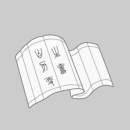
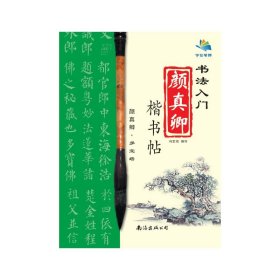
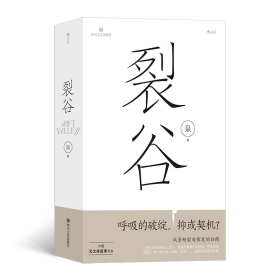
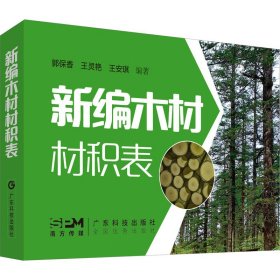
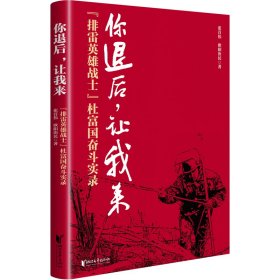






以下为对购买帮助不大的评价